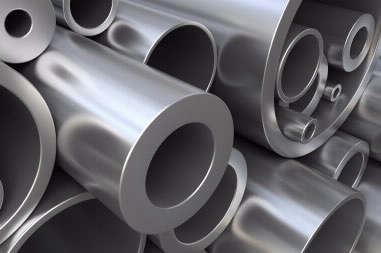New research has produced the first micro-scale, in-situ, real-time observations of detailed structural change(dynamic recrystallisation) within alloys when placed under extremely high temperatures and stress (thermomechanics).
 |
| This research provides unique information about materials used in the space and nuclear industries. |
The research provides unique information about materials used in the space and nuclear industries, which will aid the development of new materials and understanding of what they can ultimately endure.
The research from ANSTO and the University of Wollongong, aimed at developing new methods of studying materials in-situ and in real-time using synchrotron technology at the Argonne National Laboratory in the United States.
Presented today at the Thermec’ 2009 Conference in Berlin by ANSTO researcher Dr Klaus-Dieter Liss, the work is also featured on the cover of the August edition of Advanced Engineering Materials.
“Common solids such as metals, ceramics and rocks are made out of micrometre-sized crystallites consolidated in a large block and the mechanical properties depend upon their size and orientation,” explained Dr Liss.
“In a thermo-mechanical process, such as forging metal or occurring naturally in the Earth’s crust, thermal effects that drive these structures towards the perfect crystal state compete with mechanical stress, breaking larger crystallites into smaller pieces – it is this process that is directly viewed for the first time in this research.”
“The metal we studied was Zircaloy-4, which is used to hold fuel in ANSTO’s OPAL research reactor core and meanwhile we have studied other materials for usage in space and jet aircraft.
“In the reactor core this material is exposed to extreme temperatures and radiation, so increasing our understanding of how it’s affected at the atomic level is important for reactor maintenance and information for future generation developments and uses.
“Although these structural changes, scientifically known as dynamic recrystallisation, are commonly understood in science, predictions about how a specific material will react are very difficult as they depend on a number of things such as chemistry, temperature, strain and data on thermo-mechanic history.
“This research focussed on developing a new method of observation, which successfully revealed all the microstructural kinetics, relevant statistics and crystal changes that occurred during the thermo-mechanic process, providing us with more detailed information about what is structurally taking place.
“This new research data is extremely important when studying how materials may react to stimuli, such as irradiation, over time and helps monitor their durability and reliability, as well as provide insights into new materials,” he concluded.
Dr Liss is an inaugural ANSTO Senior Research Fellow working on Modern Diffraction Methods Applied to Thermo-Mechanical Process in Materials Science.
Published: 25/08/2009

